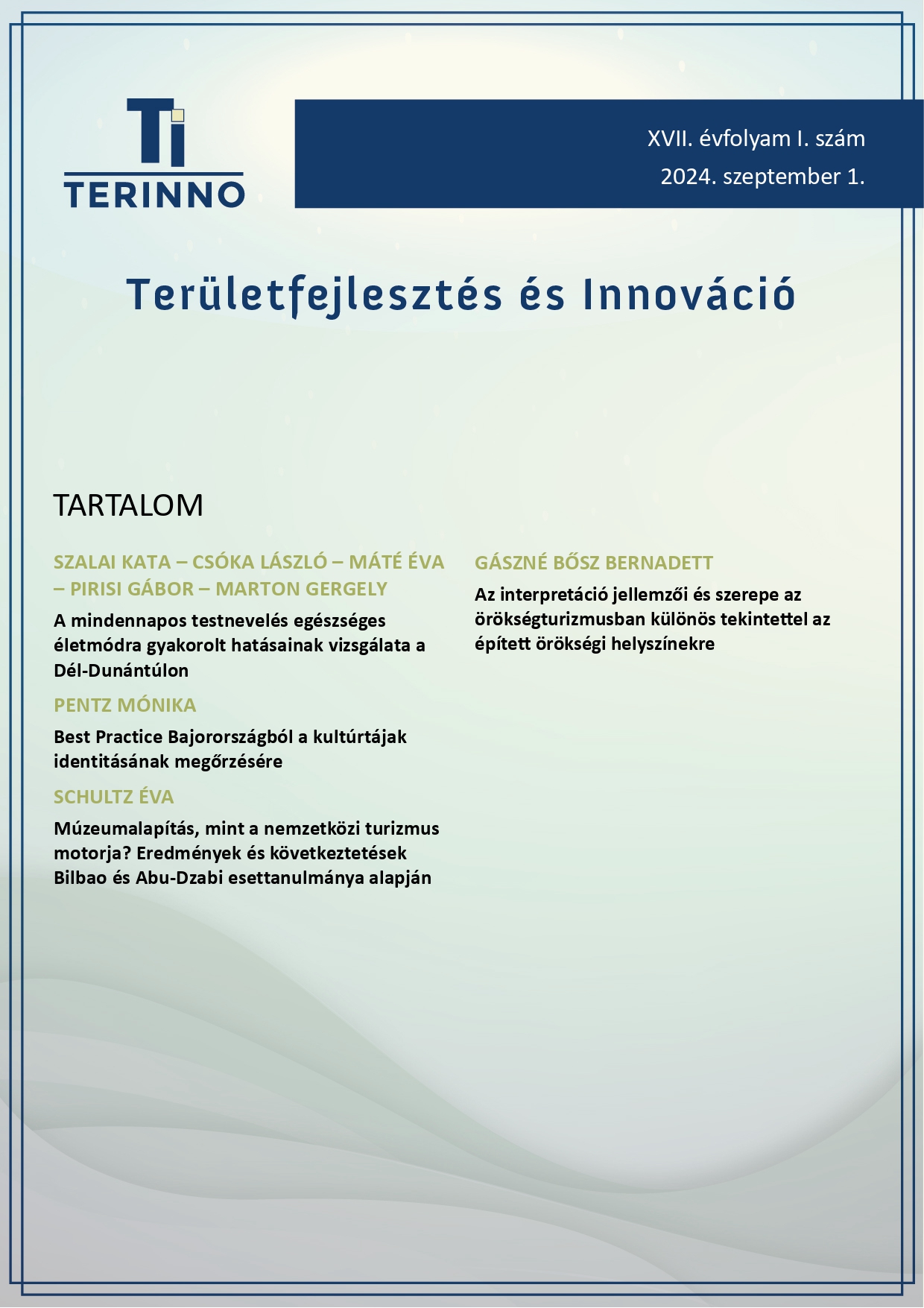Bavarian Best Practice on preserving the identity of cultural landscapes
DOI:
https://doi.org/10.15170/terinno.2024.17.01.02Keywords:
authentic environment, cultural heritage, cultural landscape, world heritageAbstract
For most people, the term "landscape" means a natural scenery, and although it has a varied past, it first evokes thoughts of harmony, tranquility, and a peaceful world. This is probably due to landscape painting, which was already evident in Dürer's works in the 16th century and truly flourished in the 18th century. At the beginning of the 19th century, Alexander von Humboldt elevated the concept of landscape to a scientific level and defined it as the totality of all aspects of a region. This definition includes geographical, geological, ecological, and cultural aspects. Based on the interaction between humans and nature, the landscape is subject to continuous change, resulting in the creation of cultural landscapes. As in other parts of the world today, Bavarian cultural landscapes are increasingly threatened by globalization. Changes in the ways individual landscapes are used (such as industrial or tourism-related developments) lead to a loss of diversity, which in turn results in the loss of the aesthetic values and identities of these landscapes and spaces. The project hopes that mapping cultural landscapes and establishing a status quo can guide future planning efforts to preserve our cultural landscape heritage.

